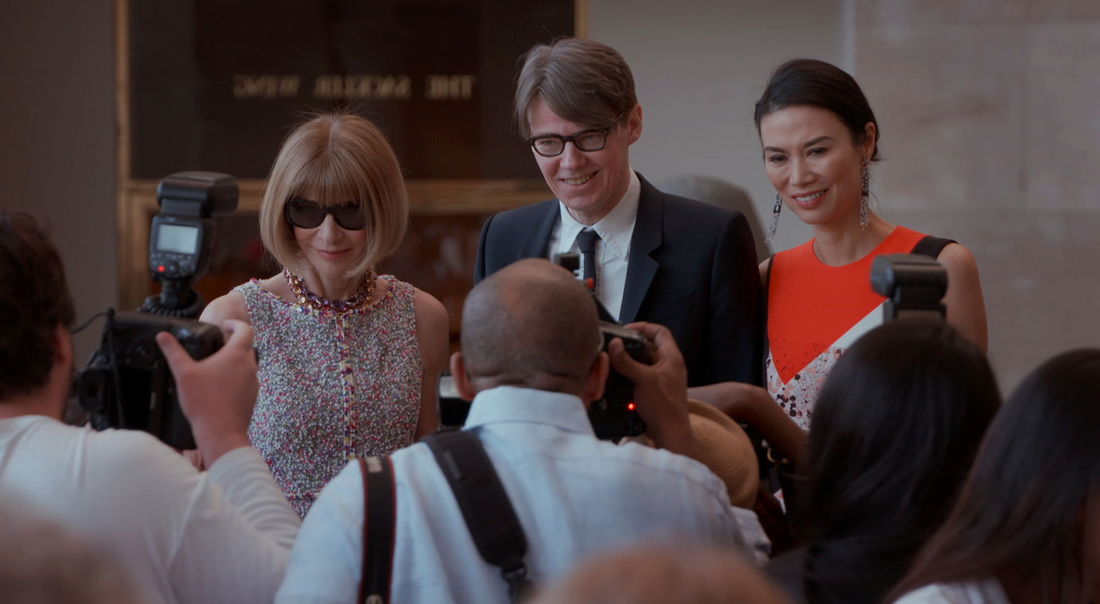The film opens on the 2015 Met Gala’s red carpet, an annual event intended to raise the entire year’s funds for the Costume Institute; it is slow and ethereal, suspending us in the intersection of the worlds of fashion, celebrity, and art. It is here where they introduce to what seems like the central question of the film: should fashion be considered art?
The film makes its case, arguing fashion as art, following a chronological structure as they count down to the Met Gala and the exhibit’s opening and following the Costume Institute’s curator Andrew Bolton through the curative process of this year’s exhibition. It’s not fast paced, but not slow, either, almost like how you would move through museum, examining each piece, then leisurely stepping to the side while still full of intent.
Despite the fact that the filmmakers seemed to set the story in the film up as if they were arguing fashion as art, I would argue that they were, in actuality, arguing fashion as relevant, as legitimate, as important. And I would argue that they succeeded in just that.
They demonstrated how fashion is a springboard for conversation and thought by using it to organically explore several weighty topics, including the expansion of the definition of art, stereotypes, racism, gender inequalities, shifting gender roles, globalization, sexuality, the power of media, celebrity culture, and more, constantly weaving in and out of the central storyline in several different directions. However, even in all of the deviations, the film never lost focus; the filmmakers always brought it back, always connected each storyline and topic in a successful and effective way. Some of the film’s strongest points even came from the deviations: a powerful direct contrast of Anna Wintour and the 'dragon lady' stereotype demonstrating the empowerment of women in fashion, a brief fashion biography of Bolton in which he leads the audience to reflect on, as he did, the “power of fashion to confront gender and sexuality,” a dissection of “Orientalism” in the West. Each topic has a purpose and a direct link to fashion as a whole and the exhibition specifically.
The film ends with a significant amount of time spent at the year’s Met Gala, returning to the red carpet, allowing the audience to revel in the pomp and spectacle of the event. We follow not only several celebrity guests as the walk through the exhibit for the first time, but also Bolton, in a grand, yet elegant, cinematic moment as he walks through the space of his creation, his obsession for the past eight months. It is a triumphant moment, the entire sequence of events portrayed in the movie leading up to this event concluding in splendor and completeness.
The First Monday in May used a cultural event that some could render insignificant and instead proved its relevance by exploring several substantial and culturally relevant subjects, a technique that could cause others to lose focus, but instead was handled here with deftness and care. The filmmakers prove that fashion is more than just fancy, a vapid commodity that says nothing of value about the world we live in. They never lose focus, but instead prove that fashion has the power to incite meaningful and necessary discourse in a way that touches all everyday each time they get dressed.
Rating: A

 RSS Feed
RSS Feed
